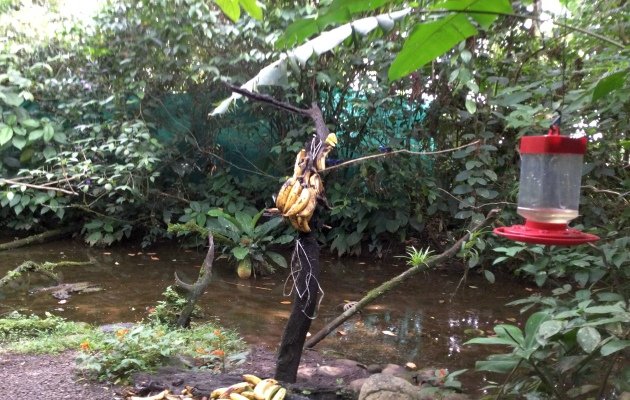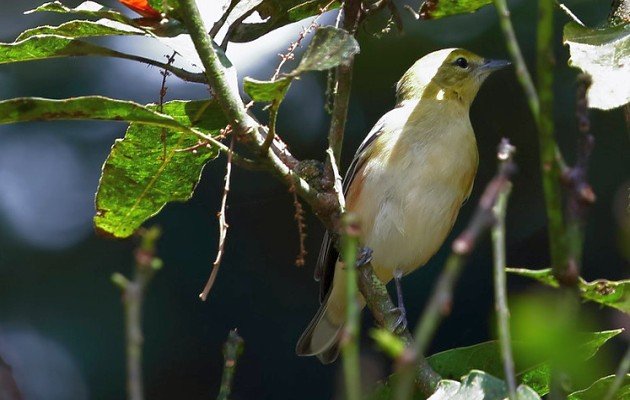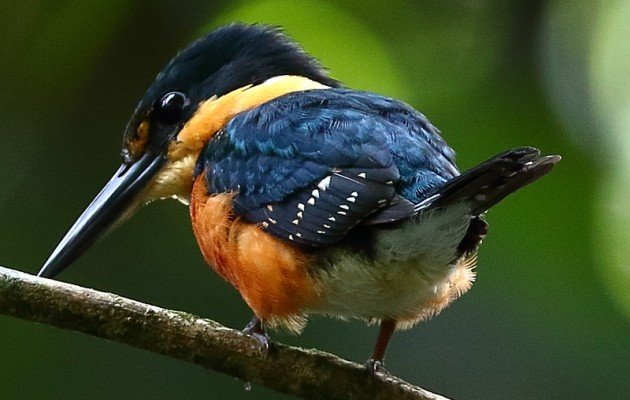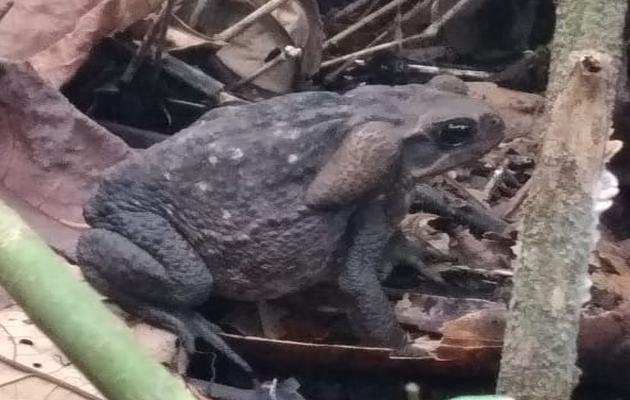
Migrant birds make an incredibly perilous journey, twice per year. How’s that for an understatement of the obvious? The equation seems incredible. On the breeding grounds of the north, a small bird flies into the night, takes a bearing for the south, gains altitude and flies onward. Flap, flap, glide. A few flaps and a glide, giving flight calls now and then perhaps to stay in touch with the other birds moving through the dark early autumn skies. They chase the summer, stay with it as they head south but it’s no easy-going vacation.
During this incredible DIY survival trip, patches of light tempt the small bird to a lethal, unnatural end. If it avoids the temptation, it eliminates the chance of smashing into a reflection and dying on the concrete of any number of cities. Let’s say it does and keeps going south. Each day, the small bird then has to fly down and find a resting place, an area to feed and take shelter. Hopefully, it has picked a route with enough habitat to keep it going. Hopefully, it can avoid death on wings; the Cooper’s Hawks and Sharp-shinned Hawks looking for their own meals. If on that route, there are too many open areas, it could more easily make a mistake, fly across an opening and find itself greeted by an Accipiter or speedy Merlin. If it doesn’t find enough to eat, it might become too tired to watch for predators and be snatched up by a domestic cat or any number of animals that are always watching, eternally waiting for an easy lunch.

As the bird reaches the warmer, more humid air of tropical places, the peril from predators includes similar bird eating raptors along with various arboreal snakes. If it can avoid landing in pesticide laden pineapple fields (where I have heard of workers sweeping up birds that have succumbed to the poisons), it just might make it to wintering territory. If the bird is lucky, the forest or second growth from the previous year is still there. If its luck has run out, that precious habitat will have been destroyed, converted into pasture or crops or housing and the bird will need to find another place to spend the winter, and fast.
If it finds a good spot to survive for several months, a spot with enough food and shelter, it might be able to fly all the way back to the north for another summer of song and nesting. However, to make it that far, the small bird still needs to avoid predators, other things always watching for a misstep, always waiting for their chance. They don’t need to be professional bird killers either, predators only need to be in the right place at the right time. In Costa Rica, they can take the form of everything from toucans (think crows with giant shark inspired beaks) to herons and monkeys.

If presented with the opportunity, there’s other things that would eat a bird too. On a recent visit to “Cope’s Place”, a local birding hotspot, I found that one of those things can be a Marine Toad.
I suppose it’s no big surprise, Marine Toads can get as big as a small quail and they will basically eat whatever they can fit in their mouth. Smaller frogs and toads, mice, bugs, worms, dog food, and carrion, you name it. Birds too, if they can catch them. If Wood Thrush hasn’t been documented as Cane Toad prey, it can now be added to the list.
Cope’s” is a bird oasis with a water feature surrounded by tropical vegetation. It was created by Jose (aka Cope), a talented, salf-taught Costa Rican artist and naturalist who lives in the Caribbean lowlands of his birdy nation. Jose’s deep knowledge of rainforest wildlife and ecology is reflected in his detailed paintings of Spectacled Owls, Ornate Hawk-Eagles, and other jungle wildlife. It’s notable that during his 40 plus years of watching local wildlife, he had never seen a Marine Toad catch a bird. It’s probably a rare event but then again, how many people are witness to the biodynamic happenings of the tropical forest understory? Depredation happens by surprise and in a flash. In tropical places where layers of life are in constant competition, it happens all the time.

By chance, on October 22, I happened to be in just the right place at the right time. Along with two clients, while calmly enjoying a fantastic natural show of two oropendola species, wood-rails, other birds, and the miniature antics of an American Pygmy-Kingfisher,

the general calm was disrupted by the distinct screeches and alarm calls of small birds. Focusing in on a flurry of activity from the other side of the water feature, I could make out a bird desperately flapping its wings as Clay-colored Thrushes and Scarlet-rumped Tanagers raised their voices in alarm. Looking closer, I could see a white belly with dark spots and some russet plumage. No doubt about it, a Wood Thrush and something has caught it! Expecting to see a snake, I was confused to find myself looking at a large dark eye and mouth grasping the poor bird. It was in the shadows and was hard to make out but then I saw a webbed foot. Not a snake! Creature from the Black Lagoon? Almost; it was a large, dark-colored Marine Toad!
The flurry of activity became hidden by foliage and I stopped hearing the screeches of the thrush. Cope had been inside making us some coffee (nothing like watching birds and drinking coffee in Costa Rica). Upon telling him what happened, he wondered if it might have been a Central American Bull Frog as that large opportunistic amphibian is equally capable of eating anything it can fit into its wet maw. He mentioned how, growing up, locals talked about losing small chickens to those frogs but never to toads. He also mentioned how another opportunist, the Russet-naped Wood-Rail would come and take the prey from the amphibian. The rails did indeed come to investigate but came up empty-beaked.
Giving in to his innate desire to investigate natural happenings, Cope went to the other side of the feature to shed some light on the situation. He didn’t find the bird but did see evidence of its demise; a trail of white feathers from the spot where the toad had caught it and then leading down to a muddy lair in some roots where it must have eaten it. Looking further, he eventually found the toad. Although it looked big to me, he said they get much bigger and was surprised this “smaller” one was able to catch the thrush.

Cope mentioned how that thrush had only been there for a couple weeks and that it was incredibly tame, that it hopped on the paths without a care in the world. One can’t help but wonder if it lost its life because of that carefree attitude. Could the toad have seen the thrush days before then and kept an eye on it? All we can say is that it saw its chance and took it. Where had the unfortunate bird spent the summer? Had birders and hikers heard its ethereal song in deciduous forests of southern Illinois? Was it a young, inexperienced bird that grew up in the wet woods behind some subdivision in Ohio? All we can say is that it was a Wood Thrush that managed to survive the incredible trip south to Costa Rica but could not escape the pounce of a Marine Toad. It’s a reminder that the life of a migrant bird is perilous, no matter where it spends the winter.
All pictures on this post were taken by Joel Rosenthal unless otherwise noted.













Tinamou? ,Black bellied duck , Red billed pegion ,Buff fronted quail dove?